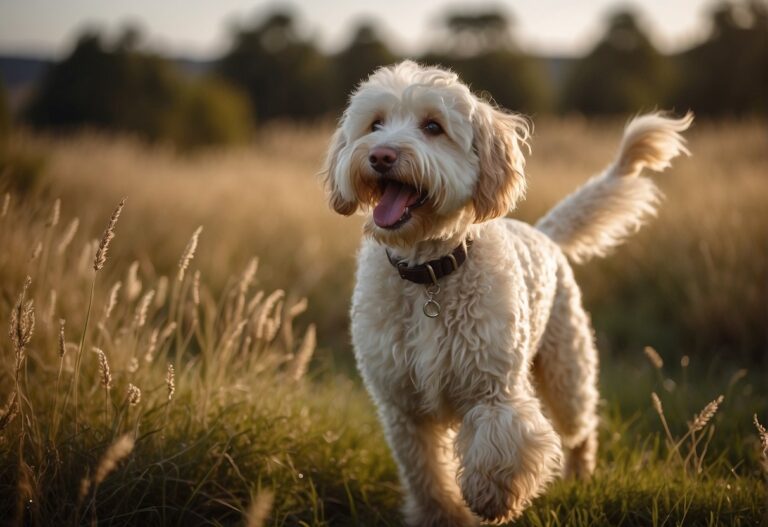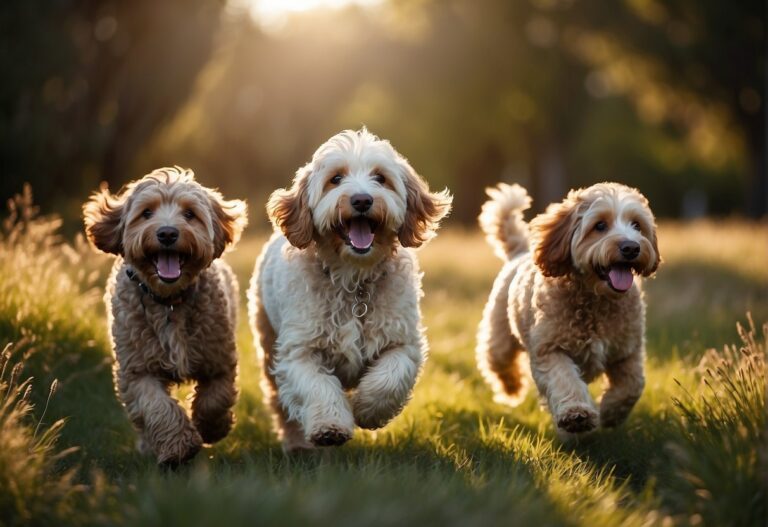Chinese Crested | 7 Things Vets Want You to Know Before Getting One

Chinese Cresteds are unique dogs known for their hairless look and graceful, elegant nature. This toy dog breed is available in two different varieties, powderpuff and hairless. It stands 11-13 inches high and weighs 8-12 pounds. Hairless Chinese Cresteds have smooth and soft skin, which is accentuated with silky hair around her feet, head, and tail. Powderpuff Chinese Cresteds have a thick coat of hair. Chinese Cresteds are among the top hypoallergenic dog breeds in 2024.
Genetic study suggests that these dogs are Mexican in origin. No matter their origin, Chinese Cresteds have been loved companions for generations.
Chinese Crested Breed Overview
| Breed Characteristics | |
|---|---|
| Group | Toy Group |
| Height | 11-13 inches |
| Weight | 8-12 pounds |
| Coat Types | Hairless: Smooth skin with hair on head, feet, and tail Powderpuff: Soft, silky double coat |
| Coat Colors | Any color or combination: pink, black, white, brown, grey |
| Life Span | 13-18 years |
| Temperament | Affectionate, lively, alert, sensitive, devoted to family |
| Hypoallergenic | Yes (especially Hairless variety) |
| Origin | Ancient breed, despite name not from China |
| Recognition | AKC, FCI, KC |
| Special Needs | Skin care, temperature regulation, dental care |
Care for the Chinese Crested
Chinese Cresteds are known for their cheerful temperament, which Care for the Chinese Crested makes them a good fit in most households with children and pets. All interactions with this breed and children should be closely supervised. Chinese Cresteds have such small bones that they are easily injured by accident.
They are also suitable for those with limited space or older people. They are happy to spend time indoors playing or relaxing on the couch. The American Chinese Crested Club has described the breed’s personality as “cat-like”.
Chinese Crested Health Problems
Chinese Cresteds are healthy, and they tend to have a long lifespan. They are susceptible to some health issues, but can live up to 18 years! A healthy lifestyle and regular checkups can reduce the risks of developing these conditions.
The Orthopedic foundation of America recommends screening Chinese Cresteds for these health issues before breeding.
- Patellar luxation
- Heart disease
- The primary lens is prone to luxation
- The progressive retinal atrophy
- Congenital deafness
- Hip dysplasia
- The disease Legg-Calve Perthes
Before getting your Chinese Crested, understand the importance of genetic health screening in dogs. Ask the breeder for any results from screening tests they’ve run on both the mother and father of the Chinese Crested pup before you purchase it.
Common Health Issues in Chinese Crested Dogs (%)
Dental Problems
The Chinese Crested dog is not an exception. The Chinese Crested is known for having dental problems, such as early tooth decay and gingivitis.
To keep the mouth of their Crested healthy, pet parents should brush at home their dog’s tooth and make dental appointments according to a veterinarian’s recommendation. It’s not just the teeth that are affected by poor dental hygiene. Organ damage can also be caused.
Eye Problems
eye diseases may affect some Chinese Cresteds, including Progressive retinal Atrophy (PRA), Primary Lens Luxation (PLL), and Dry Eye. Some issues, such as primary lens luxation (PLL), can be corrected surgically. Others (such PRA), however, are not treatable and result in total blindness. Speak to your veterinarian if you see any changes in the eyes or vision of your dog.
Deafness
Deafness can be inherited in some Chinese Crested pups. Deaf dogs are certainly capable of living a full life and being happy, but pet owners must take special measures to ensure their safety, including teaching them hand signals.
Orthopaedic issues
Patellar luxation can be a health issue in Chinese Cresteds. This occurs when the patella slips. It can make your dog skip, or even walk in a bunny-hopping manner. In mild cases, patellar dislocations do not require treatment. Others can be treated with nutritional supplements and anti-inflammatory medication that supports joint health. Surgery may be required in severe cases.
Chinese Cresteds can develop hip dysplasia and Legg, Calve-Perthes Disease. These are two genetic hip conditions. The treatment can be a combination of medications, supplements, and physical therapy to relieve pain and inflammation.
Skin problems
The hairless skin needs special care from sun exposure and extreme cold temperatures. Chinese Cresteds are susceptible to dry skin and comedones, which is a blocked pore.
What to Feed A Chinese Crested
Choose a dog food that is suitable for the life stage of your Chinese Crested.
Some of the most popular high-quality brands are Royal Canin Hill and Purina. Ask your veterinarian for advice on the best food to give your Crested.
What To Feed A Chinese Crested
The majority of Chinese Crested adult dogs do fine with just two daily meals, one each morning and evening. Chinese Crested pups, on the other hand, need more frequent feedings to maintain their development and growth. This is usually three or four smaller meals per day.
What Should I Feed My Chinese Crested Cat?
It depends on the dog’s age, weight and activity, her health status, as well as what brand she is eating.
You can use the portion guidelines found on dog food packages, but it is important that you also consult your veterinarian about the best feeding schedule for your pet.
Chinese Cresteds: Nutritional Advice
Chinese Cresteds need a balanced and nutritional diet. Don’t give supplements to your dog unless they are recommended by your veterinarian.
Chinese Cresteds: Training and Behavior Tips
Chinese Crested Temperament and Personality
According to ACCC, Chinese Cresteds make happy dogs. The ACCC says that they are friendly to everyone, including people who just meet them. It is therefore important to socialize your Chinese Crested dog early on and in a consistent manner. This will help her feel comfortable when she’s introduced to new environments.
Chinese Crested Behavior
According to breed clubs, this dog breed has some cat-like traits. It is also known for perching on couches’ backs, just like cats. They are also very eager to please people, and they form close bonds with the ones they love. They are very needy and will become irritable if not given enough attention.
Chinese Crested Training
Chinese Crested pups need to be socialized early and exposed to different animals, situations, and people. Breed clubs recommend enrolling your puppy into the AKC S.T.A.R. Puppy Program.
Use it when you are training. Keep an eye out for the number of treats that you give her.
Enjoyable Activities for Chinese Cresteds
- Interactive puzzles
- Short Walks
- Training in agility
- Scent work
- Dock Diving
- Playing fetch
- Learn new tricks
- The tug of war is a gentle game
- Cuddling
Chinese Crested Grooming Guide
Both Chinese Cresteds, powderpuffs and hairless Chinese cresteds require a lot of grooming. Powderpuffs and hairless dogs both require professional grooming, regular brushing, and additional care to protect their skin.
Skin Care
The skin of Hairless Chinese Crosteds is smooth and soft. They need a bit more TLC. When your dog is exposed to the sun for long periods, it’s important that her skin be protected by sunscreen and clothing. Moisturizing their skin is also necessary to keep it healthy and prevent damage. Even on milder days, a warm coat or sweater is recommended.
Coat care
Powderpuffs Chinese Cresteds do not require as much care for their skin as those without hair, but they still need to be given special attention because of the double coat that is made up of a silky, longer topcoat, and a soft, undercoat.
You will need to brush the powderpuff pet at least once a week in order to avoid painful matts. When their hair becomes too long, you’ll need to take them to the groomer to get it trimmed.
Eye Care
Keep an eye out for changes to your Crested dog’s eyes. This could be the sign of an eye problem developing. Keep up with your yearly health exams and call your veterinarian if anything seems off, like redness, clouds, or discharge.
This breed may also experience normal tearstaining. You can keep your dog’s face and eyes clean by wiping their eyelids with a Dog-Safe Wipe.
Acute Ear Care
It is important to keep your Chinese Crested dog’s ears and canals clean in order to prevent ear infections. If you see any signs of redness in the ears or smell, call your veterinarian. This could indicate an infection.
Nail care
Given that Chinese Cresteds spend most of their time indoors, it is possible for pet owners to find themselves trimming their toenails more frequently. Once a week, check your dog’s nails and trim back any that are getting too long.
If you are not sure about bathing schedules? Read our guide on when to bathe your new puppy.
Please consider pet parents when making decisions.
Chinese Crested puppies are a longer-term investment than other breeds, with an average lifespan of 13-18 years.
You’ll have a loyal, loving and unique companion for a long time. You must maintain your Crested, regardless of whether it’s hairless or powderpuff.






